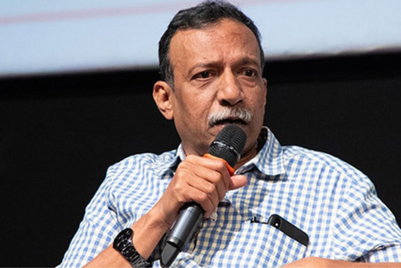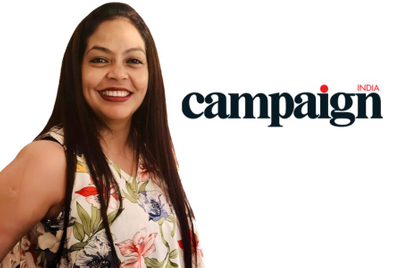
By all accounts and projections, and with a little bit of trend-spotting, it’s easy to say that 2011 will be a spectacular year for advertising.
Growth is nudging – or, indeed exceeding – 20%. We’re witnessing hyper-competition in category after category, notably in telecom, automotive and real estate – three high-growth sectors.We have a booming middle-class, retail infrastructure in place, and personal loans available easier than they have ever been.
All of these point to a year of unparalleled success and profits.
Or so it seems, when one looks at the big picture.
That’s the problem, always, with the big picture; it doesn’t tell the story right.
While, overall, the industry will grow at a more than encouraging clip, what one tends to ignore is, as in the categories that agencies handle communication for, advertising, too, has become a hypercompetitive industry.More players are chasing the accounts and brands that you chase. More players are chasing them at prices lower than you are. And more brand managers are taking advantage of this fact (as they should). The result, in a funny way, is that each agency has a smaller new business potential than we have seen hitherto.
Depending on size, age and lineage and ownership, different agencies will have different concerns, advantages, disadvantages and focus areas. I’ve tried to put together a list that all should focus on, irrespective of the factors listed above.
As usual, I’ll request readers to write in with their comments, bouquets and brickbats.
Focus on talent
This piece of ‘advice’ seems so basic and fundamental that it sounds like I’m joking. No, I’m not. The last few years have been witness to senior level execs leaving large and established agencies to set up their own agencies/creative shops/studios. This is the first lot of talent that is lost; the next is those who are hired by these new entrepreneurs. In addition, marketing outfits are cherry-picking the best of adland to bolster their own talent pool.
CEOs in agencies will have to identify key human resources and spend time with each of those identified. Are they happy? If not, what will make them happy? What will it take to arrive at a situation where you are confident that you will not lose a particular professional for the next year at least?A basic first step is to have a real Human Resources manager in place. And a team to help him/her. I use the word ‘real’ because too many managers are lulled into believing that they have an HR division simply because a filled-in box in the organization chart identifies a few people as belonging to such a ‘division’. In most cases, this division rubber-stamps decisions made by the CEOs and the NCDs, without a care to the havoc that is being wrought by arbitrary and random hires and changes to what were once well thought-through and designed organizational structures.
Get your increment/promotion strategy into place
The first thing that is required is for managers to evaluate every single person in the organization. Today, too many of the large agencies have more people than they need – but not enough good people. Funnily, one finds this trend creeping into the smaller, newer agencies as well.The root cause: laziness. There is just not enough time and attention given to the recruitment process and, once a person is hired, complacency and inertia set in.
In a year like this one, there will be high expectations of high increments. Use these expectations to your advantage. Reward those you value handsomely; those with talent and those who are productive. Do not fall into the trap of rewarding all in the organization with a ‘minimum’. Those who do not deliver, sadly, do not deserve the minimum. If they choose to leave (which they well might thanks to the overall shortage of people), so be it. Think hard about replacing those who leave. If ten leave, do you have to, in today’s day and age, aided and abetted by technology, replace them with a fresh consignment of ten?
It might be more sensible to focus on the quality and the talent of those you bring in rather than on the number.Much of this will depend on whether you have gone through the basic exercise of measuring each professional’s volume and quality of output.
This is no easy task, but it’s a task that needs to be done. A poor evaluation will result in a consequent poor decision – one that you will have to live with.
Stop ‘cheating’
There are ‘rate’ cards in place which are anachronistic – and unfair. Having a high rate for ‘adaptation’ is ridiculous today, as most adaptations require but a short while on the Mac. Similarly, to charge thousands of rupess for a copy of a TVC on a DVD is insane. It is important to remember that many of your clients were, just a few years ago, colleagues in your agency. They know exactly how much many of your high-priced services cost. For large and old agencies, remember that many of the newer agencies are throwing in many of these services and value-adds free.
Stop corruption
Okay, I said it. There is a lot of corruption in the business, especially in the films space, but no one seems to be prepared to discuss it. This results in inflated costs to the clients – who, in many cases as I’ve said earlier, were colleagues a few years ago. Ignore this and continue presenting unfair, unreal and unviable estimates and you’re asking for trouble. Remember that open-source works best in the video area – the very area that corruption is at its worst. Ignore this, and you let a hundred Mofilms in through the door.
Focus on account planning and strategy
In an age when a Rahul Welde speaks of the commoditization of creative, just pretty ads will be seen as commodities. It’s in the planning and the insights area where huge opportunities lie – and it is planning and insight led communication which will allow even a Rahul Welde to agree that not all creatives are commodities. A look at Maruti’s current mileage-focused campaign is testament to the statement. Are the commercials pretty? No. Are they stand-out, production-wise? No. But what the campaign has is a spectacular understanding of the Indian consumer – and the result is communication that will resonate. The more the investments in planning and strategy, the safer the relationship with the client. Pretty ads are useless; anyone can create them.
Keep an eye on wasteful expenditure
This is where small, entrepreneur run agencies will score over the large network agencies. There is (and, hopefully, most will agree), too much of wasted expenditure in the large agencies. Is that trip to Delhi or Mumbai really necessary? Can you take an earlier (or later) flight that is 30% cheaper? Do you have to stay in a 5 star hotel or will a guesthouse do? Does every meeting have to end with a piss-up on agency account? Is the overtime that you pay each month justified? Are the late night pizzas and taxi-fares justified? Does all the work you sent to Cannes/Spikes/Abbys have a snowball’s chance in hell of even being short-listed or are you sending entries to keep all the creatives happy?
Invest in training
I walk around agencies, I speak to many tens of professionals from adland every week, and I rarely hear of training/workshops/seminars. Skills need to be enhanced and refreshed – and the more you invest in this area, the greater the benefit to the brands you work on. It is knowledge and understanding that will help you create communication that is not a commodity. Use training as a retention tool, as a rewards program as well.
Market yourself
It’s been over three years since we started Campaign India, and it’s been over three years since we’ve been writing about this. It’s ridiculous that companies in the business of brand-building do not market themselves. About 25 years ago, I read Up the organisation and Further up the organization by Robert Townsend. In one of the books, I forget which one, he ssuggests that you call yourself up at your office to undersatand how difficult or easy it is for people to get in touch with you.
That was an age before the mobile. Before the Internet.
Today, the paradigm has changed, but the principle remains. Search for yourself on the Internet. For yourself and for your agency.
Smaller, newer agencies are easier to find, as are the key people in their agencies. Smaller agencies update their websites more frequently.
It’s the younger entrepreneurs who blog and tweet, keeping themselves in the public eye.
It’s the new crop who is accessible to media, who want to write and comment.
Think about that.
Beware of digital, the Trojan Horse
It’s simplistic to think of the digital agencies as just that, digital. Many of the players in India have their roots in advertising – and they understand brands, advertising and digital. And, in a world that is getting increasingly digital, they’re better placed to take your business than you are to take theirs. Let digital seep into the agency. Train your team, conduct workshops, encourage learning.
Learn to collaborate
There was a time when all in advertising knew a lot about media. Then came the delinking of media from advertising agencies, and then came the media independents. Creative agencies need to spend time and energy understanding how media fiunctions. How can one get a newspaper or a TV channel to partner a communication exercise? What are the innovations possible? What is the possible upside to the brand in terms of earned, as opposed to paid media? Answers to thse questions will come from understanding media and how each medium operates, the costs, building relationships with the media buying/planning agency, and so on.
There are many more; these, I thought, are the ones that both the large and the small agencies could focus on. I might have missed, according to you, one or more. Actually, I’m sure I would have.
Write in and make this a conversation, a rich conversation.









+(1).png&h=334&w=500&q=100&v=20250320&c=1)
.jpg&h=334&w=500&q=100&v=20250320&c=1)



.jpg&h=268&w=401&q=100&v=20250320&c=1)
.jpg&h=268&w=401&q=100&v=20250320&c=1)



.jpg&h=268&w=401&q=100&v=20250320&c=1)
